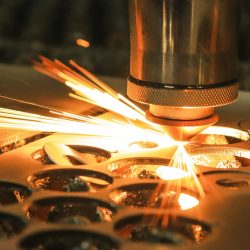Keeping up to date with a fluctuating steel market
THE ongoing impact of the Coronavirus Pandemic and manufacturing activity in China continues to influence the international market and push up pricing.
Full details are contained in the update below provided by European Metal Recycling Ltd (EMR). This suggests that European steel coil prices will reach record high levels in the coming months, driven by tight supply and following the trend set by China.
However, it is anticipated that these will level out in the second half of the year as the balance between supply and demand is restored and previously idled steelmaking capacity in Europe and further afield resumes production.
At Yorkshire Laser and Fabrication keeping our customers informed is, to us, key to providing good customer service, something that we remain committed to delivering. We are doing our best to source competitively priced materials, provide realistic lead times and keep our customers informed in the event of delays outside of our control.
We are keeping a watchful eye on what’s happening within the steel market so that we can adapt accordingly and work with our customers to the best of our ability in these trying times to deliver the level of service they have come to expect from YLF and which we take pride in providing.
For the full story, check out the update below…
‘Rising Chinese prices drive global steel values upwards in March
The global steel sector was in a state of reflection, in the first half of February. Supply chain participants were looking to the Chinese market and developments in the post-Lunar New Year holidays for direction. Many believed that prices would soften, when buyers returned to work, after the Spring festival. This negativity filtered through to the international steel market, particularly in Asia and Europe. Transaction values began to stagnate, and buyers reduced their purchase volumes.
Despite the pre-holiday scepticism, Chinese prices rebounded strongly. Restrictions in steelmaking output, for environmental reasons, are helping to reduce inventory levels and create the potential for supply tightness. The positivity in China has translated into the international steel market. This has taken many global buyers by surprise.
The potential for a cut in export rebates has limited the number of offers made by Chinese suppliers to customers in other Asian countries. This has assisted steel mills, across the region, to successfully implement rises in local prices, in March. Further advances in transaction values are forecast in the near term.
It is forecasted global steel prices will continue their upward trend, in the near term. Many years ago, Chinese transaction values followed those in Western nations. Now, however, China leads the trend in global steel selling figures.
Optimism in the European steel sector was reignited last month. Buyers returned to the negotiating table seeking increased order volumes. This fuelled a recovery in the upward price trend. Significant increases in European selling figures are now envisaged, in the next few months.
European steel coil prices are forecast to reach record levels as tight supply is expected to propel sheet and coil prices, in Europe, to all-time high figures, in the near term. This is supporting the price of steel and raw materials, worldwide. A shortage of competitive import quotations has developed in Europe. The availability of locally produced material is extremely limited. Mill delivery lead times are very extended. The recovery in steel output continues to be insufficient to meet current demand. Several steelmakers are encountering technical problems when restarting equipment.
In late February early March adverse weather conditions restricted steel production and deliveries across the region, adding to the tight supply situation. Consequently, European coil prices are forecast to continue their upward trend, in the April/June quarter. However, a downward correction in steel transaction values is predicted to occur in the second half of 2021. Movement towards restoring the balance between supply and demand is expected.
The unprecedentedly high cost of steel is creating severe financial pressure for many companies. It is negatively affecting existing projects and delaying the commencement of new schemes. Moreover, the automotive industry’s requirements for coil are forecast to decline, as a result of a shortage of semiconductors and subdued vehicle sales. The continued resumption of previously idled steelmaking capacity is envisaged, both within Europe and globally. This should lead to an increase in supply from local and foreign sources.
Despite the anticipated downward correction, European coil prices and mill profit margins are expected to remain at historically high levels, in the medium term. Economic activity should improve, as vaccination programmes are rolled out.’

